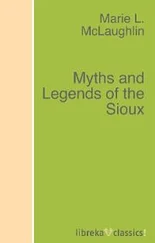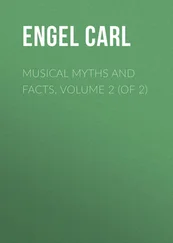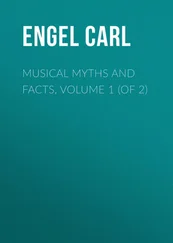Richard A. Proctor - Myths and Marvels of Astronomy
Здесь есть возможность читать онлайн «Richard A. Proctor - Myths and Marvels of Astronomy» — ознакомительный отрывок электронной книги совершенно бесплатно, а после прочтения отрывка купить полную версию. В некоторых случаях можно слушать аудио, скачать через торрент в формате fb2 и присутствует краткое содержание. Жанр: foreign_edu, Физика, на английском языке. Описание произведения, (предисловие) а так же отзывы посетителей доступны на портале библиотеки ЛибКат.
- Название:Myths and Marvels of Astronomy
- Автор:
- Жанр:
- Год:неизвестен
- ISBN:нет данных
- Рейтинг книги:5 / 5. Голосов: 1
-
Избранное:Добавить в избранное
- Отзывы:
-
Ваша оценка:
- 100
- 1
- 2
- 3
- 4
- 5
Myths and Marvels of Astronomy: краткое содержание, описание и аннотация
Предлагаем к чтению аннотацию, описание, краткое содержание или предисловие (зависит от того, что написал сам автор книги «Myths and Marvels of Astronomy»). Если вы не нашли необходимую информацию о книге — напишите в комментариях, мы постараемся отыскать её.
Myths and Marvels of Astronomy — читать онлайн ознакомительный отрывок
Ниже представлен текст книги, разбитый по страницам. Система сохранения места последней прочитанной страницы, позволяет с удобством читать онлайн бесплатно книгу «Myths and Marvels of Astronomy», без необходимости каждый раз заново искать на чём Вы остановились. Поставьте закладку, и сможете в любой момент перейти на страницу, на которой закончили чтение.
Интервал:
Закладка:
I have already considered at length (see the preceding Essay) the evidence on which this strange theory rests. But there are certain matters connecting it with the above narrative which must here be noticed. The mention of the shepherd Philition, who fed his flocks about the place where the Great Pyramid was built, is a singular feature of Herodotus's narrative. It reads like some strange misinterpretation of the story related to him by the Egyptian priests. It is obvious that if the word Philition did not represent a people, but a person, this person must have been very eminent and distinguished—a shepherd-king, not a mere shepherd. Rawlinson, in a note on this portion of the narrative of Herodotus, suggests that Philitis was probably a shepherd-prince from Palestine, perhaps of Philistine descent, 'but so powerful and domineering, that it may be traditions of his oppressions in that earlier age which, mixed up afterwards in the minds of later Egyptians with the evils inflicted on their country by the subsequent shepherds of better known dynasties, lent so much fear to their religious hate of Shepherd times and that name.' Smyth, somewhat modifying this view, and considering certain remarks of Manetho respecting an alleged invasion of Egypt by shepherd-kings, 'men of an ignoble race (from the Egyptian point of view) who had the confidence to invade our country, and easily subdued it to their power without a battle,' comes to the conclusion that some Shemite prince, 'a contemporary of, but rather older than, the Patriarch Abraham,' visited Egypt at this time, and obtained such influence over the mind of Cheops as to persuade him to erect the pyramid. According to Smyth, the prince was no other than Melchizedek, king of Salem, and the influence he exerted was supernatural. With such developments of the theory we need not trouble ourselves. It seems tolerably clear that certain shepherd-chiefs who came to Egypt during Cheops' reign were connected in some way with the designing of the Great Pyramid. It is clear also that they were men of a different religion from the Egyptians, and persuaded Cheops to abandon the religion of his people. Taylor, Smyth, and the Pyramidalists generally, consider this sufficient to prove that the pyramid was erected for some purpose connected with religion. 'The pyramid,' in fine, says Smyth, 'was charged by God's inspired shepherd-prince, in the beginning of human time, to keep a certain message secret and inviolable for 4000 years, and it has done so; and in the next thousand years it was to enunciate that message to all men, with more than traditional force, more than all the authenticity of copied manuscripts or reputed history; and that part of the pyramid's usefulness is now beginning.'
There are many very obvious difficulties surrounding this theory; as, for example (i.) the absurd waste of power in setting supernatural machinery at work 4000 years ago with cumbrous devices to record its object, when the same machinery, much more simply employed now, would effect the alleged purpose far more thoroughly; (ii.) the enormous amount of human misery and its attendant hatreds brought about by this alleged divine scheme; and (iii.) the futility of an arrangement by which the pyramid was only to subserve its purpose when it had lost that perfection of shape on which its entire significance depended, according to the theory itself. But, apart from these, there is a difficulty, nowhere noticed by Smyth or his followers, which is fatal, I conceive, to this theory of the pyramid's purpose. The second pyramid, though slightly inferior to the first in size, and probably far inferior in quality of masonry, is still a structure of enormous dimensions, which must have required many years of labour from tens of thousands of workmen. Now, it seems impossible to explain why Chephren built this second pyramid, if we adopt Smyth's theory respecting the first pyramid. For either Chephren knew the purpose for which the Great Pyramid was built, or he did not know it. If he knew that purpose, and it was that indicated by Smyth, then he also knew that no second pyramid was wanted. On that hypothesis, all the labour bestowed on the second pyramid was wittingly and wilfully wasted. This, of course is incredible. But, on the other hand, if Chephren did not know what was the purpose for which the Great Pyramid was built, what reason could Chephren have had for building a pyramid at all? The only answer to this question seems to be that Chephren built the second pyramid in hopes of finding out why his brother had built the first, and this answer is simply absurd. It is clear enough that whatever purpose Cheops had in building the first pyramid, Chephren must have had a similar purpose in building the second; and we require a theory which shall at least explain why the first pyramid did not subserve for Chephren the purpose which it subserved or was meant to subserve for Cheops. The same reasoning may be extended to the third pyramid, to the fourth, and in fine to all the pyramids, forty or so in number, included under the general designation of the Pyramids of Ghizeh or Jeezeh. The extension of the principle to pyramids later than the second is especially important as showing that the difference of religion insisted on by Smyth has no direct bearing on the question of the purpose for which the Great Pyramid itself was constructed. For Mycerinus either never left or else returned to the religion of the Egyptians. Yet he also built a pyramid, which, though far inferior in size to the pyramids built by his father and uncle, was still a massive structure, and relatively more costly even than theirs, because built of expensive granite. The pyramid built by Asychis, though smaller still, was remarkable as built of brick; in fact, we are expressly told that Asychis desired to eclipse all his predecessors in such labours, and accordingly left this brick pyramid as a monument of his reign.
We are forced, in fact, to believe that there was some special relation between the pyramid and its builder, seeing that each one of these kings wanted a pyramid of his own. This applies to the Great Pyramid quite as much as to the others, despite the superior excellence of that structure. Or rather, the argument derives its chief force from the superiority of the Great Pyramid. If Chephren, no longer perhaps having the assistance of the shepherd-architects in planning and superintending the work, was unable to construct a pyramid so perfect and so stately as his brother's, the very fact that he nevertheless built a pyramid shows that the Great Pyramid did not fulfil for Chephren the purpose which it fulfilled for Cheops. But, if Smyth's theory were true, the Great Pyramid would have fulfilled finally and for all men the purpose for which it was built. Since this was manifestly not the case, that theory is, I submit, demonstrably erroneous.
It was probably the consideration of this point, viz. that each king had a pyramid constructed for himself, which led to the theory that the pyramids were intended to serve as tombs. This theory was once very generally entertained. Thus we find Humboldt, in his remarks on American pyramids, referring to the tomb theory of the Egyptian pyramids as though it were open to no question. 'When we consider,' he says, 'the pyramidical monuments of Egypt, of Asia, and of the New Continent, from the same point of view, we see that, though their form is alike, their destination was altogether different. The group of pyramids of Ghizeh and at Sakhara in Egypt; the triangular pyramid of the Queen of the Scythians, Zarina, which was a stadium high and three in circumference, and which was decorated with a colossal figure; the fourteen Etruscan pyramids, which are said to have been enclosed in the labyrinth of the king Porsenna, at Clusium—were reared to serve as the sepulchres of the illustrious dead. Nothing is more natural to men than to commemorate the spot where rest the ashes of those whose memory they cherish whether it be, as in the infancy of the race, by simple mounds of earth, or, in later periods, by the towering height of the tumulus. Those of the Chinese and of Thibet have only a few metres of elevation. Farther to the west the dimensions increase; the tumulus of the king Alyattes, father of Crœsus, in Lydia, was six stadia, and that of Ninus was more than ten stadia in diameter. In the north of Europe the sepulchre of the Scandinavian king Gormus and the queen Daneboda, covered with mounds of earth, are three hundred metres broad, and more than thirty high.'
Читать дальшеИнтервал:
Закладка:
Похожие книги на «Myths and Marvels of Astronomy»
Представляем Вашему вниманию похожие книги на «Myths and Marvels of Astronomy» списком для выбора. Мы отобрали схожую по названию и смыслу литературу в надежде предоставить читателям больше вариантов отыскать новые, интересные, ещё непрочитанные произведения.
Обсуждение, отзывы о книге «Myths and Marvels of Astronomy» и просто собственные мнения читателей. Оставьте ваши комментарии, напишите, что Вы думаете о произведении, его смысле или главных героях. Укажите что конкретно понравилось, а что нет, и почему Вы так считаете.












